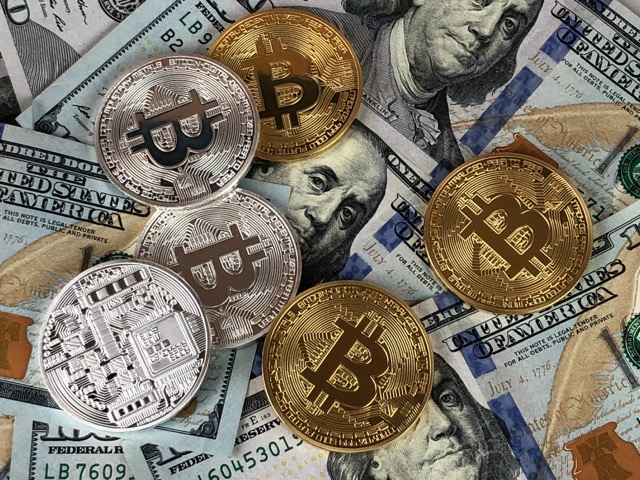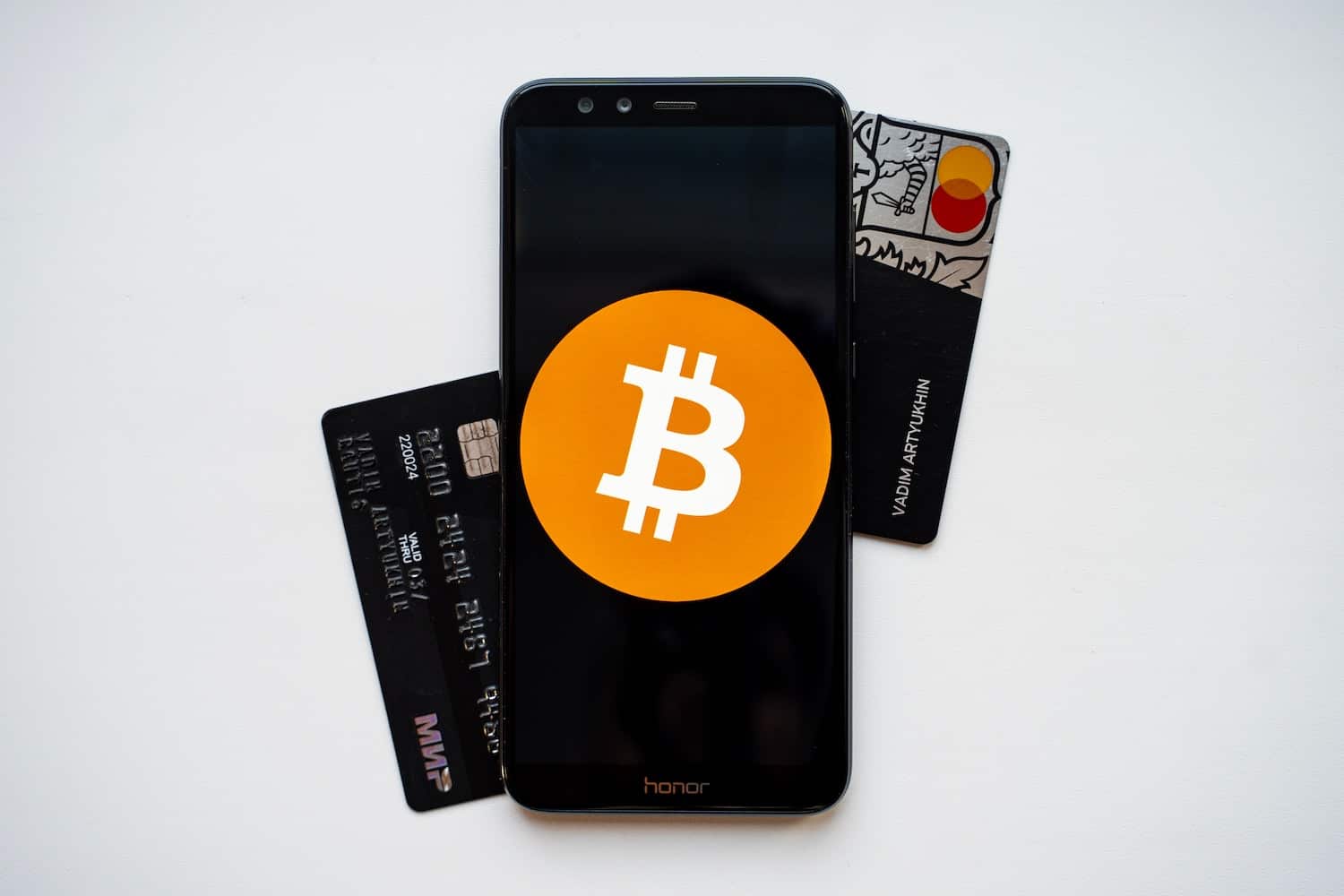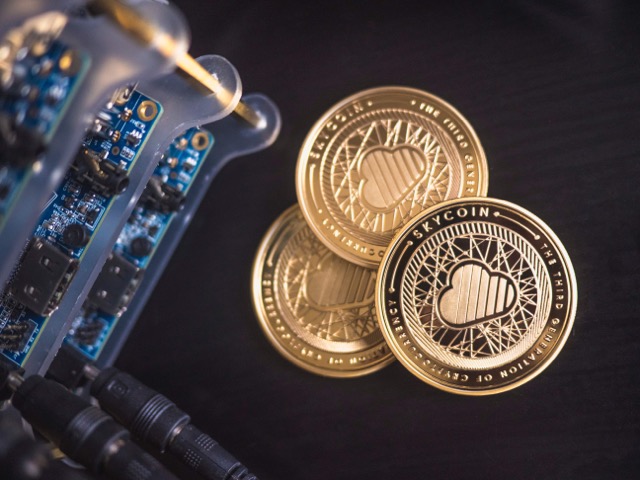
10 Use Cases of Blockchain in Banking
Table of Contents
Read on to find out what blockchain for banking is all about and explore 10 potential use cases of this cutting-edge technology for the financial services sector.
Blockchain banking – definition
Let’s start at the beginning. What exactly is blockchain in the context of banking?
Blockchain technology is an open, distributed ledger that records transactions between two parties efficiently and permanently. A blockchain consists of individual blocks of data that involve a series of related transactions, linked together in a specific order. All of the involved parties can share a digital ledger across a computer network without needing a centralized authority or intermediaries. That’s why processing transactions through blockchain is faster.
The speed is just one of the many potential benefits blockchain brings to banking. It’s not only about greater efficiency but also a new level of transparency and security.
How can banking benefit from blockchain technology?
Once we consider the specific features of blockchain, it only makes sense that the banking industry will be taking the lead in the adoption of this technology.
Just think about why we set banks up in the first place. Banking institutions were created to connect groups of people together and allow all kinds of trade and commerce between them. A blockchain is a tool that can accomplish the same but on a global scale. Moreover, it’s secure and transparent.
Blockchain also holds potential implications for global commerce. It could make trade more efficient by removing the manual and paper-based processes and introducing streamlined and automated ones instead. A public blockchain can be a great collaborative tool because it’s decentralized, and no single entity can own it. That’s why blockchain is more than just the underlying technology for cryptocurrencies like Bitcoin or Ethereum.
Here are ten use cases of blockchain in banking to help you understand how the financial services industry will be attempting blockchain in the near future.
10 essential use cases of blockchain in banking
 1. Blockchain in banking means faster payments
1. Blockchain in banking means faster payments
By establishing a decentralized channel (e.g. crypto) for payments, banking institutions can use emerging technologies to facilitate faster payments and lower the fees of processing them. By offering higher security and lower cost of sending payments, banks could introduce a new level of service, bring new products to the market, and finally be able to compete with innovative fintech startups.
Moreover, by adopting blockchain, banks will be able to cut down on the need for verification from third parties and accelerate the processing times for traditional bank transfers. Already in 2016, 90% of the European Payments Council members believed that blockchain would change the industry fundamentally by 2025.
2. Clearance and settlement systems
A distributed ledger technology like blockchain could enable bank transactions to be settled directly and keep track of them better than existing protocols such as SWIFT. An average bank transfer takes a few days to settle because it’s limited by the way our financial infrastructure was built.
Moving money around the world is a logistical challenge to many banks. A simple bank transfer needs to bypass a complicated system of intermediaries such as custodial services before it reaches its destination. Moreover, the bank balances need to be reconciled across the global financial system, which comprises a broad network of funds, asset managers, traders, and more.
For example, if you’d like to send money from an account in a German bank to one in the United States, that transfer will be executed through the Society for Worldwide Interbank Financial Communications (in short, SWIFT). Every day, SWIFT members send 24 million messages to some 10,000 different institutions!
The centralized SWIFT protocol processes only the payment orders. The actual money is processed through a system of intermediaries. Each of them comes at an additional cost and takes a lot of time.
A decentralized ledger of transactions like blockchain could enable banks to keep track of all the transactions publicly and transparently. Banks won’t need to rely on a network of custodial services and regulatory bodies like SWIFT. They could simply settle transactions directly on a public blockchain.
3. Buying and selling assets
By removing the middleman and asset rights transfer, blockchain lowers the asset exchange fees and reduces the instability of the traditional securities market. According to one source, moving securities on a blockchain could save from $17 to $24 million each year in global trade processing costs.
Buying and selling assets like stocks, commodities, or debts are based on keeping track of who owns what. Financial markets accomplish this through a complex network of exchanges, brokers, clearinghouses, central security depositories, and custodian banks. All of these different parties have been constructed around an outdated system of paper ownership. As you can guess, the system is not only slow but riddled with errors and prone to deception.
Executing such transactions electronically is complicated because most of the time, buyers and sellers don’t rely on the same custodian banks, and these don’t always rely on trusted third parties to hold onto all the paper certificates.
Note that Germany’s government now allows banking institutions to offer services related to cryptocurrencies. Ukraine is following this path too.
If you’re buying or selling an asset, the order will be relayed through numerous third parties. That’s why transferring ownership is so complicated. Note that each party maintains its own version of the truth in a separate ledger. The system is not only inefficient but also imprecise.
Blockchain will revolutionize financial markets by creating a decentralized database of digital assets. A distributed ledger allows transferring the rights of an asset through cryptographic tokens that can represent such assets off-chain. Currencies like Bitcoin and Ethereum accomplish that with purely digital assets, but many blockchain companies are now working on solutions that would help us tokenize real-world assets such as gold or real estate. Cutting out the middleman will also lower the asset exchange fees and accelerate the process significantly.
4. Fundraising
Raising money through venture capital is a complicated process today. Most of the time, it happens like this:
Entrepreneurs put decks together, carry out countless meetings with partners, follow long negotiations over valuation and equity – and, eventually, hope to exchange their company for payment.
Blockchain companies are accelerating the process by raising funds with several alternatives. These include Initial Exchange Offerings (IEOs), Equity Token Offerings (ETO), and Security Token Offerings (STOs). STO is currently the most popular option because it’s legally protected. To benefit from this model, projects need to pass a due diligence process. Pioneers of STOs include Switzerland and Malta where companies like Scerri & Concise Ltd offer such services. The most prominent ETO trading platform today is Neufund.
Previously, Initial Coin Offerings (ICOs) were more popular but are now considered scammy and unreliable.
5. Blockchain in banking – credit and loans
Traditional banking institutions underwrite loans by using a system of credit reporting. With blockchain, we’re looking at the future of peer-to-peer loans, faster and more secure loan processes in general, and even complex programmed loans that can approximate syndicated loan structure or mortgages.
Banks that process loan applications evaluate the risk by looking at factors such as credit score, homeownership status, or debt to income ratio. To get all of that information, they need to ask for your credit report provided by specialized credit agencies. In the United States, that amounts to three institutions.
Such centralized systems are often harmful to consumers because they contain erroneous information. Moreover, concentrating such sensitive information within a small number of institutions makes it very vulnerable. For example, last year, one of them, Equifax, got hacked, and exposed the credit information of over 145 million Americans. Now you can see why blockchain offers a more secure, efficient, and cheaper way of processing loan applications.

6. Trade finance
Another area blockchain development is set to revolutionize the trade finance sector. Trade finance refers to all of the financial activities related to international trade and commerce. Did you know that many trade finance activities today still rely on paperwork such as invoices, letters of credit, or bills? Many order management systems allow carrying out this work online, but the process takes a lot of time.
Blockchain-based trade finance will streamline the trading process by getting rid of such time-consuming manual processes, paperwork, and bureaucracy.
Consider this example:
In traditional trade finance systems, all of the participants need to maintain their own database for transaction-related documents. And all of these databases need to be continuously reconciled against each other. A single error in one document may be duplicated to the copies of this document in other databases.
How does blockchain help? With blockchain, there’s no need to keep several copies of the same document. That’s because the information can be integrated into one digital document, which is updated in real time and can be accessed by all network members.
7. Blockchain in banking as digital identity verification
Banks wouldn’t be able to carry out online financial transactions without identity verification. However, the verification process consists of many different steps that consumers don’t like. It can be face-to-face checking, a form of authentication (for example, every time you log into the service), or authorization. For security reasons, all of these steps need to be taken for every new service provider.
With blockchain, consumers and companies will benefit from accelerated verification processes. That’s because blockchain will make it possible to reuse identity verification for other services securely.
The most popular innovation in this area is Zero Knowledge Proof. Several countries and large corporations are now working on solutions based on ZKP.
Thanks to blockchain, users will be able to choose how they wish to identify themselves and with whom they agree to share their identity. They will need to register their identity on the blockchain only once. There’s no need for repeating that registration for every service provider – as long as those providers are also powered by the blockchain. Naturally, storing this type of information on a blockchain also ensures its security.
8. Blockchain in banking for accounting and auditing
Accounting has been a relatively slow area to digitize. One of the reasons behind that is the need to match the strict regulatory requirements regarding data integrity and validity. That’s why accounting is potentially another area that could be transformed with blockchain.
Experts believe that the technology will simplify compliance and streamline the traditional double-entry bookkeeping systems. Instead of keeping separate records based on transaction receipts, businesses can add transactions directly into a joint register. All the entries in the register will be distributed.
As a result, the records will be more transparent and secure. A blockchain would work like a digital notary who verifies all the transactions. Blockchain smart contracts could be used in such applications to pay for invoices automatically as well.
9. Hedge funds
A hedge fund is a type of investment partnership that involves a fund manager and a group of investors who are limited partners. But such participants are usually traders and not your ordinary investors. The idea behind hedge funds is maximizing investor returns and minimizing the risks.
According to Autonomous NEXT, the number of hedge funds trading cryptocurrencies doubled between October 2017 and February 2018.
A decentralized crypto hedge fund provides an open platform that allows more investors and strategists to participate. Traditional hedge funds are controlled by fund managers who work within a single entity. Such decentralization is an excellent example of the potential of blockchain for the financial services industry.
10. Peer-to-peer (P2P) transfers
P2P transfers allow customers to transfer funds from their bank accounts or credit cards to another person online. Currently, there are many P2P transfer applications available on the market. But they all come with certain limitations.
For example, some of them allow you to transfer money only within a certain geographical region. Others don’t allow you to transfer money if both parties are located in the same country. Moreover, P2P services may charge large commissions for their services and not be secure enough for storing sensitive customer data.
All of these problems can be addressed with blockchain development. The technology will help to decentralize applications for peer-to-peer transfers. Note that blockchain has no geographical limitations, enabling P2P transfer across the entire globe. Moreover, blockchain-based transactions will take place in real time, so the recipient won’t have to wait four days until they receive money.
The future of blockchain in banking
Banking executives believe that blockchain will have to fulfill several conditions before becoming a mainstream technology in banking. To make the most of blockchain, banks need first to develop the infrastructure required to operate a global network using matching solutions. Only a widespread adoption of blockchain will lead this technology to disrupt the sector.
But the investment will come with significant returns. Once fully adopted, blockchain is expected to enable banking institutions to process payments faster and more accurately, all the while reducing transaction processing costs. All in all, blockchain-enabled banking applications will deliver a better customer experience and help traditional banking institutions to compete with fintech startups.
Are you looking for a blockchain team that has experience in delivering solutions to the banking sector? Get in touch with us; our teams know how to help financial institutions explore the potential of innovative technologies like blockchain.
This may interest you:
Concise Software among the best blockchain developers in Poland!
Blockchain in healthcare – here are 5 essential use cases
How are we all going to use blockchains in the near future?
Blockchain – a starter guide to the world of technology
Introduction to a smart contract on blockchain
Cryptocurrencies and “mining” – how does the digging process work?
Everything you need to know about Ethereum
Open banking – a new dimension of financial services
Smart contracts – what are they and how to create them? [GUIDE]
P2P payments – what are peer-to-peer payment apps used for?
What is an Initial Exchange Offering (IEO) and how to participate in it?
IEO vs STO – key differences you should know
What is blockchain development? A complete guide!